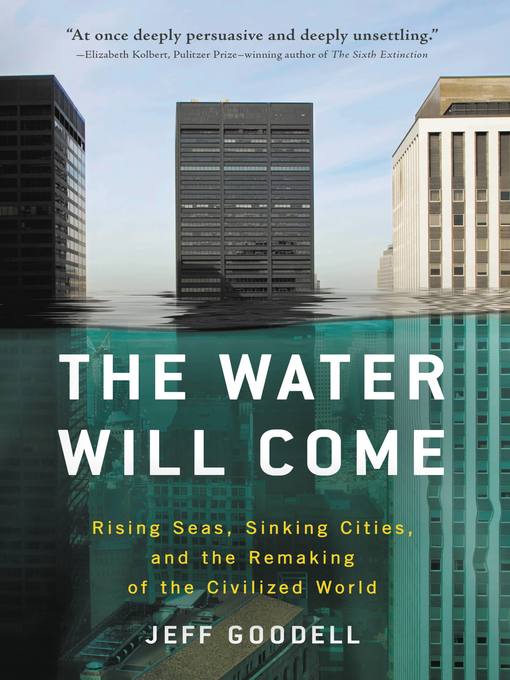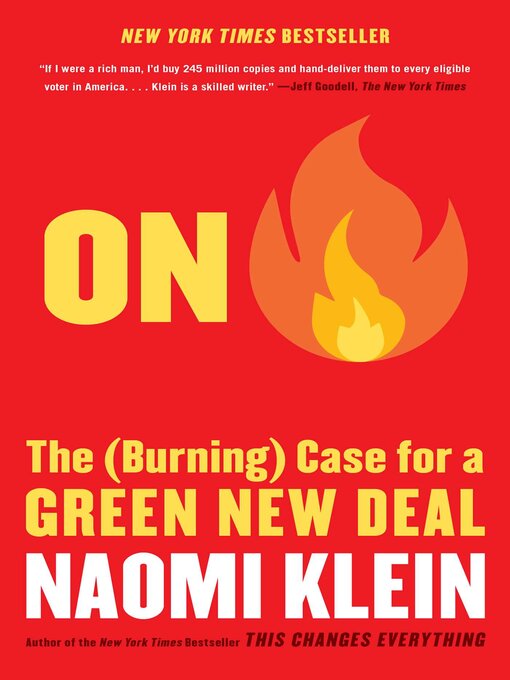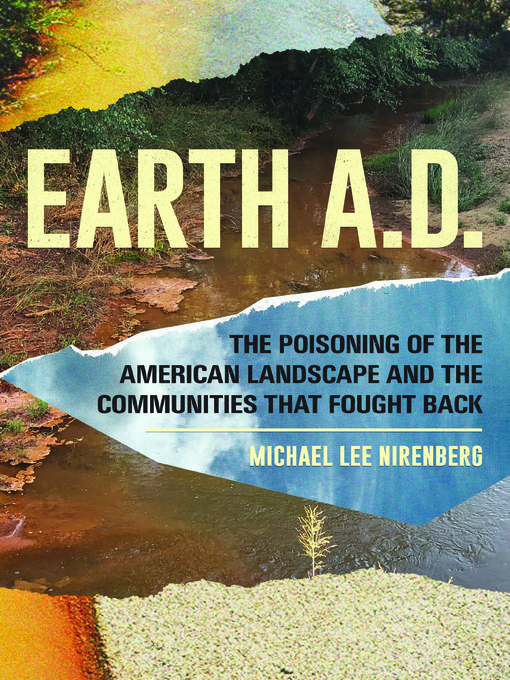Questions about Environmental Education at the Greenpoint Library? Contact athompson@bklynlibrary.org.
Funded by a $5 million grant from the Greenpoint Community Environmental Fund, $1.8 million from the NY State Education Department, and over $14 million in Library and City capital funding, the new Greenpoint Library and Environmental Education Center is the result of community collaboration with Brooklyn Public Library and project architect Marble Fairbanks.
The plaza design offers the public an engaging civic space that demonstrates sustainability and reinterprets the environmental history of the region. There are clear visual connections to interior activities and two accessible green roofs on the upper floors. Primary exterior building materials include custom sandblasted wood panels on the upper level and custom cast concrete on the lower level. Serving as a demonstration project for innovative approaches to sustainable design and a learning tool for the community, the building exceeds LEED Gold certification standards.
Key green features of the building include:
- A sustainable green roof with areas open to the public, solar panels, educational energy use tracking, rainwater management and horticultural programs, reducing energy usage and providing public access to fresh air and outdoor space.
- Maximum use of natural daylight on the upper level and energy efficient lighting including LED lights and light sensors on the lower level.
- Use of energy efficient glazing, solar shading devices, well insulated exterior enclosure panels and materials.
- Installation of energy efficient mechanical, electrical and plumbing equipment, infrastructure and building management controls that will provide an optimum level of comfort and indoor environmental air quality, while optimizing energy performance.
- Use of sustainable, durable interior finishes with low VOC emissions and high non-toxic recycled content.
- Reduction of indoor and outdoor water consumption by using only WaterSense label low flow plumbing fixtures.
Explore Greenpoint Library
Greenpoint Library and Environmental Education Center has so many fascinating environmentally-friendly design elements. Expand each section below to learn about how the building works.
Displacement air (throughout): The large, open spaces in the library utilize a highly efficient heating and cooling system called “displacement ventilation.” A large amount of air is introduced into the space at a low velocity, close to the floor. Our bodies attract the air, creating individualized “thermal plumes” around each person. This delivers fresh air to everyone and removes many of the contaminants associated with heat sources while creating a comfortable environment. The system uses smaller fans and supplies fresh air efficiently throughout all four seasons.
Wood feature walls (first floor): The library’s three meeting rooms bring the outdoors inside. Each meeting room features a wood wall containing the different species of trees that are native to the Greenpoint neighborhood. The first floor rooms have ash and walnut, while the second floor room has red oak. All of the wood used in the library is Forest Stewardship Council-certified, meaning it was harvested from forests that are responsibly managed, socially beneficial, environmentally conscious and economically viable.
Bioswale (ground level): The native grasses, shrubs and trees within this planting area serve an important purpose. Together, they form a bioswale, a linear channel designed to slow down rainwater runoff, which will infiltrate the permeable soil below. Bioswales help reduce flooding by holding rainwater before releasing it into the sewer system. An additional bonus of bioswales is that debris and pollutants in the flowing water will decompose in the ground instead of entering regional waterways.
Glacial outcroppings (ground level): These rocks have a story to tell you. During the last ice age, the Laurentide Ice Sheet began expanding above the area where you’re now standing to heights that exceed Manhattan’s current skyline. This granite outcropping is inspired by the sculpting force and direction of the ice sheet during the glacial formation and melting retreat that occurred approximately 18,000 years ago.
GFRC panels (ground level): Take another look! These panels aren’t wood, they’re glass fiber-reinforced concrete casts of the sandblasted wood panels from the façade above. Using the sandblasted wood as molds, these panels replicate the natural grain and knotting found in the cedar panels.
Reading Garden (second floor): Throughout New York City, street trees, gardens and parks provide spaces for humans and animals to encounter one another. This garden is designed to offer habitat and food for birds and insects using dense, fruit-bearing plants. In turn, the plants will migrate out from this site as birds drop seeds and berries throughout the neighborhood.
Cistern (second floor): What happens when it rains? We keep the water! This cistern can capture and store up to 1,500 gallons of rainwater, which we’ll use for lab experiments and to water our plants. By harvesting rainwater, we use less tap water and reduce the amount of rainwater entering the storm sewer system. Rainwater that is not held here will flow from the roofs down to the plaza below and filter through the bioswale.
Sandblasted panels (second floor): Wood is composed of both harder and softer layers, which is related to trees’ annual growth rings. The cedar wood panels on the façade of the building have been sandblasted to remove a portion of the softer wood, making it more durable and creating texture from the natural grain.
Solar panels (third floor): Greenpoint Library runs on sunshine! Installed on a canopy structure above mechanical equipment, our solar panel modules can collect over 15 kilowatts of energy at once, just from sunlight. Over the course of one year, they can produce over 19,000 kilowatts, which help power the library. The modules are bifacial, meaning they can collect energy from both sides of the panel: sunlight from above and from light reflected off the roof.
Pollinator garden (third floor): Birds and bugs have a big job—they’re pollinators! Pollinators and plants have a symbiotic relationship: pollinators assist plants’ reproductive process by transferring pollen, while the plants produce nectar for the pollinators to drink. The plant species installed in this garden were selected to bloom at different times of the year to attract a wide variety of pollinators.
Hand pump/cistern (third floor): This hand pump is connected to the 1,500-gallon cistern on the second floor rooftop garden. Holding almost 20 bathtubs full of rainwater, the cistern can provide water for these plants when rain is scarce. Pump the handle a few times to get the water moving and use it on everything from lab experiments to manual plant irrigation. Just be sure to grab a watering can!
Greenpoint Environmental History Project
The Greenpoint Environmental History Project is dedicated to documenting and preserving the environmental history of Greenpoint through oral histories and community scanning. All of the collected documents, images, and oral history recordings are made available online as part of BPL's digital collection. You can also find the oral histories on SoundCloud and the Our Streets, Our Stories Tumblr.
The Greenpoint Environmental History Project is made possible by the Greenpoint Community Environmental Fund.
With gratitude to the Community Advisory Committee and our funders

Greenpoint Community Environmental Fund, Mayor Bill de Blasio, Brooklyn Borough President Eric Adams, Assembly Member Joseph Lentol, the New York State Education Department, and the New York City Council including Speaker Corey Johnson, Council Member Stephen Levin and Committee Chair Jimmy Van Bramer.
Greenpoint Library and Environmental Education Center was made possible with funding provided by the Office of the New York State Attorney General and the New York State Department of Environmental Conservation through the Greenpoint Community Environmental Fund.
![]() Support for technology and internet service provided by the Spectrum Learning Lab program.
Support for technology and internet service provided by the Spectrum Learning Lab program.
Brooklyn Public Library’s Green Series is made possible through the generous support of Whole Foods Market.
Staff Picks
- Greenpoint and the environment
- Environmental issues & sustainability
- Nature-filled picture books for children




















